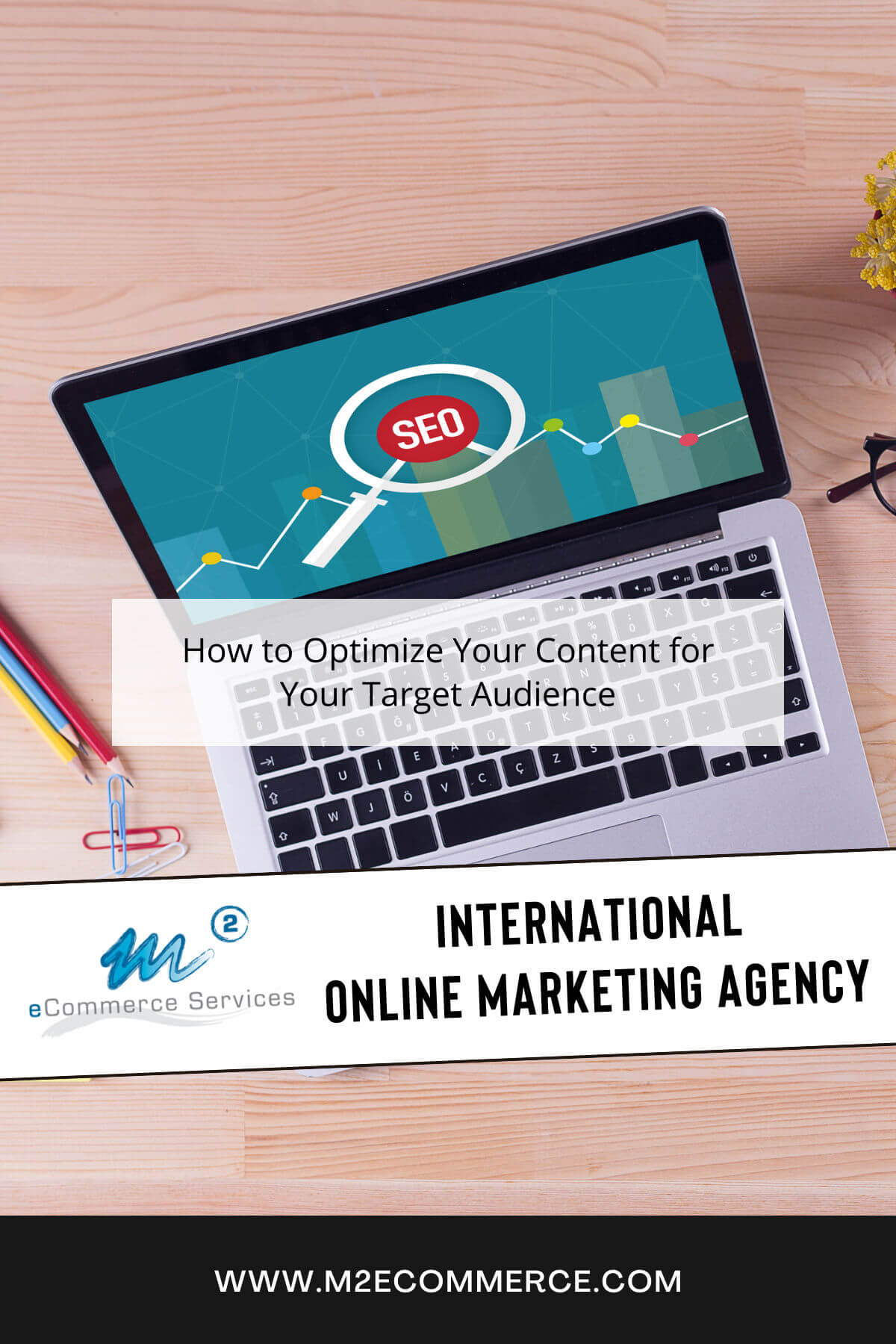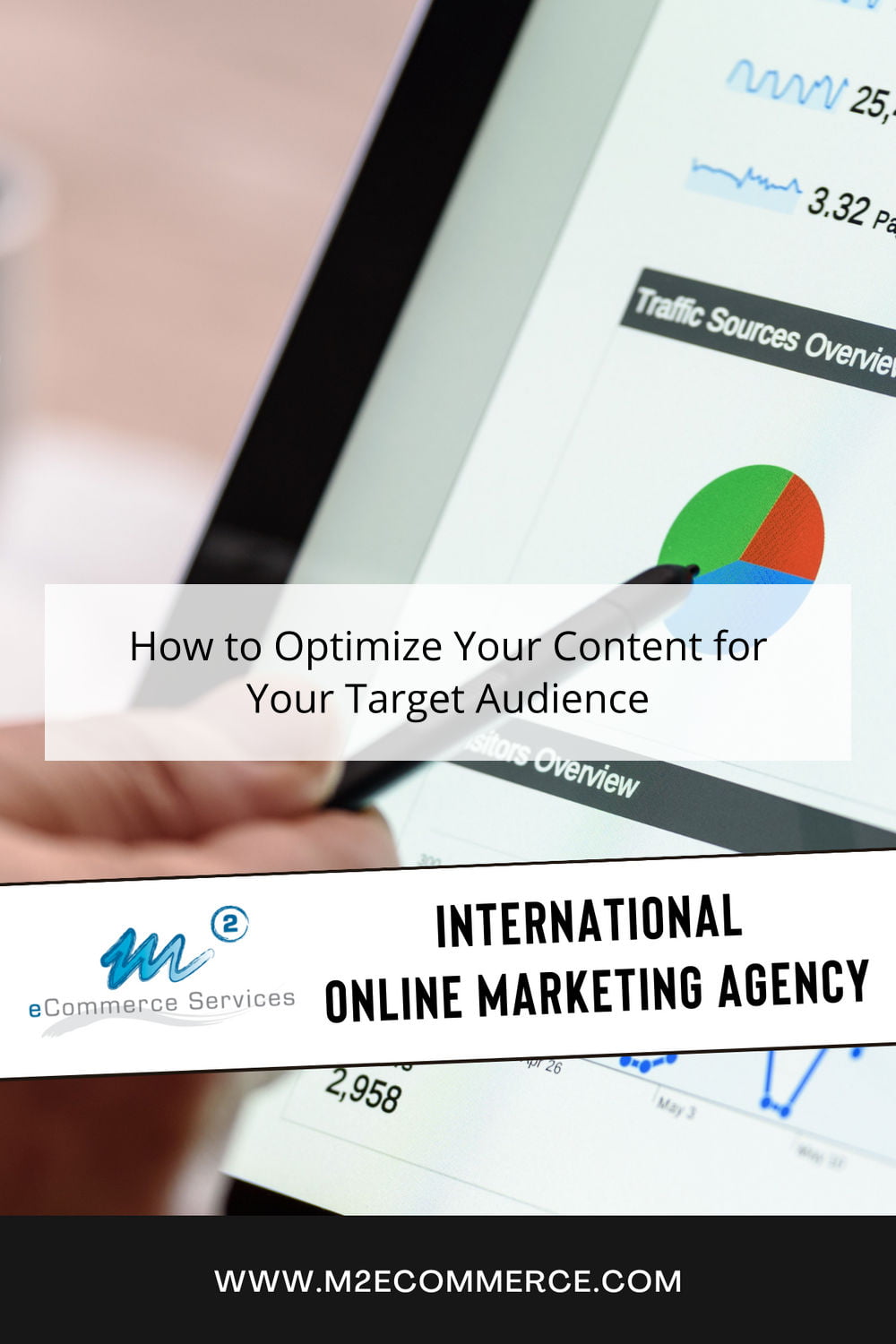As a content strategist, it’s important to consider your target audience when crafting content. Capturing their attention and maintaining it is key. That’s why optimizing your content for the right audience is essential.
Knowing how to craft content that speaks directly to them can be the difference between success and failure. In this article, we’ll explore how to optimize your content for your target audience so they get the most out of your message.
By understanding their needs and desires, you’ll be able to craft content that resonates with them on an emotional level. You’ll also learn how to leverage language that will make them feel in control and how to use visuals that will keep them engaged throughout the entire piece.
By the end of this article, you’ll have all the tools you need to create content that speaks directly to your target audience, giving them a sense of control and satisfaction from reading your words.
Understanding Your Target Audience
It’s essential to get to know your target audience before crafting content that resonates with them. Audience profiling and persona building are invaluable tools for content strategists in doing so.
By understanding the motivations, interests, and goals of your audience, you can create content that is tailored to their needs and speaks to them directly.
Start by researching your target customers on a deeper level. What online platforms do they frequent? What type of language do they use? What challenges do they face in terms of achieving their goals? Understanding the answers to these questions will help you build an accurate picture of who your audience is.
Once you have a clear picture of your target audience, you can start creating content that speaks directly to them. From there, it’s all about testing different types of content and measuring results in order to identify which messaging works best across various channels.
With this data-backed strategy, you can ensure that every piece of content is optimized for your target audience – giving you better results and more control over how people perceive your brand. Moving forward then, crafting content that resonates with your audience should be a natural next step.
Crafting Content That Resonates With Your Audience
As they say, “The pen is mightier than the sword”—and it is especially true when it comes to content strategy. Crafting content that resonates with your audience requires understanding them and leveraging language that gives them control.
To create content that speaks to your target audience in a meaningful way, you should:
- Utilize engaging storytelling
- Offer diverse perspectives
- Keep the language reader-friendly
- Incorporate multimedia elements
- Provide an interactive experience
Engaging storytelling can help draw your audience in, while diverse perspectives offer a unique window into the topics you are discussing. Keeping the language reader-friendly ensures everyone can understand and engage with your content even if English isn’t their first language.
Additionally, incorporating visuals and multimedia elements can add texture to your words and bring out different aspects of the topics being discussed. Finally, offering an interactive experience will make sure your readers are actively engaged with the material.
With these pieces in place, you can build up strong content that speaks directly to your target audience and encourages them to stay engaged with the material. It is important to remember that giving your readers some level of control over their experience makes for a more dynamic journey for them as they go through each piece.
With well crafted content that resonates with your target audience, you can open up doors for deeper engagement with them and foster long lasting relationships.
Leveraging Language That Gives Your Audience Control
When crafting content for your target audience, it is important to use language that will give them a sense of control. Dialogue driven content can be beneficial as it allows readers to interact with the material, making them feel more in control of their experience. Phrases like “What do you think?” and “Let’s take a closer look at this” can create an inviting dialogue between you and the reader.
Context dependent language also helps to give readers a sense of control by allowing them to make their own interpretations of the material. When using context dependent language, be sure to provide enough information so that readers are able to draw their own conclusions without being overwhelmed or confused.
By leveraging language that gives your audience control, you are creating an interactive and engaging experience for them which will encourage them to return to your content again and again.
Using dialogue driven language allows readers to actively participate in the conversation while context dependent language provides them with the opportunity to interpret material in a way that makes sense for them. As such, these two elements create an environment where readers are empowered with choice and control over their experience.
Embracing this type of environment will not only help make sure your content is optimized for your target audience but it will also ensure that they feel taken care of while they consume it. This then sets up a positive relationship between reader and writer which is beneficial for both parties involved.
By creating this kind of connection with your audience, you can build trust, loyalty, and ultimately more engagement with your content overall.
Utilizing Visuals For Engagement
In today’s digital landscape, visuals are essential to capturing the attention of your target audience. Engaging images and visuals can help you tell a story that resonates with your readers, drawing them in and captivating their interest.
Visual storytelling is an effective way to create an emotional connection with your viewers, helping you to stand out from the crowd and reach new heights in engagement.
It’s no secret that people process visual information far faster than text – using visuals strategically in your content will not only enhance user experience but also keep readers engaged for longer.
Thoughtfully designed visuals can add value to your brand identity and help build trust with potential customers. Additionally, utilizing visuals will increase the chances of readers sharing your content on social media platforms, leading to more exposure for your business.
When it comes to optimizing content for maximum impact, don’t underestimate the power of visuals. Investing in quality visual content can be one of the most effective techniques in driving engagement and ensuring that your message reaches its intended audience – so why wait?
Take advantage of this powerful tool and start leveraging visuals today! Moving forward, let’s discuss how to optimize for search engines…
Optimizing For Search Engines
I’m always looking for ways to optimize my content for my target audience.
Keyword research is an important part of the process, as it helps me understand what my audience is searching for and what terms they use.
To ensure my content is seen, I also need to use effective SEO strategies, such as backlinks, meta tags, and internal links.
Lastly, I need to make sure I’m using on-page optimization techniques, like using the right keywords in titles, headings, and images.
All of this helps to ensure that my content is seen by the right people.
Keyword Research
Keyword research is a key part of the content optimization process.
As a content strategist, you need to understand how to identify the right keywords that will help you reach your target audience.
Strategic placement and data analysis are essential components in this process.
For example, by analyzing search engine data, you can gain insights into the search terms used by your target audience and determine which ones should be included in your content.
Additionally, understanding where to place these keywords within the content is just as important; it helps ensure that they are noticed by both readers and search engines alike.
By doing keyword research diligently, you can make sure your content reaches its intended audience and ensure that it ranks well in search engine results pages.
In short, optimizing for search engines means taking the time to properly analyze the data and strategically place relevant keywords in order to maximize visibility for your content.
SEO Strategies
Once you have done your keyword research and strategically placed relevant keywords in the content, the next step is to focus on SEO strategies.
In this process, it is important to consider how your content will be seen by search engines and how it can reach its intended audience.
Audience research should also be conducted to determine what kind of content your target audience wants and expects, as well as what techniques they are using to find it.
This can help you refine your keyword optimization strategy in order to make sure that you are reaching the right people with the right message.
Additionally, ensuring that your content is optimized for mobile devices is another key component of successful SEO.
By accounting for these factors, you can increase the chances of your content being seen by those who need it most.
With careful planning and thoughtful execution, effective SEO strategies can help ensure that your content reaches its full potential.
On-Page Optimization
To further enhance your content’s visibility in search engine results, it is important to consider on-page optimization. This involves a number of steps, such as optimizing headlines and meta descriptions to include relevant keywords that have been identified through keyword research. Doing so helps to ensure that your content is properly indexed by search engines and shown to the right people.
Additionally, you should also look at how your content is organized and structured in order to create an experience that appeals to your target audience. A well-structured page with clear navigation makes it easier for users to find what they’re looking for quickly, which can increase engagement levels and improve user satisfaction.
By taking the time to perfect on-page optimization techniques, you can help give your content the competitive edge it needs in order to reach its full potential. When done correctly, this can result in higher rankings and more traffic from organic sources – giving you control over how successful your content is!
Creating Content For Different Platforms
Creating content for different platforms is a key component of an effective content strategy. Different platforms have different audiences, so the same piece of content may need to be adjusted to reach its intended target. A/B testing can be used to help determine which version of the content is more likely to engage an audience on each platform.
Furthermore, sharing strategies can also help maximize the visibility and impact of your content across all channels.
When crafting content we must consider the language and format that would best resonate with our target market. We should ask ourselves: What type of content will they find most interesting? What topics might they be interested in? What style of writing will draw their attention?
By exploring these questions, you can ensure that your message reaches its intended destination.
In order to measure the success of your content, it’s important to track data such as the click-through rate, open rate, and engagement metrics. This allows us to understand how our audience interacts with our messages, so we can modify them accordingly.
Through careful analysis and planning we can gain valuable insights into what resonates with our target market and use this information to craft even more effective messaging in the future. With this knowledge in hand, you can create and distribute engaging content that stands out from the competition.
Measuring The Success Of Your Content
Striking the perfect balance between quality and quantity of content can be a challenge. However, by utilizing data analysis and customer feedback, you can optimize your content to better engage with your target audience.
When it comes to measuring the success of your content, it is essential that you start by understanding who you are writing for. According to recent studies, 63% of consumers prefer to buy from companies that understand their needs and expectations. This means that if you want to capture their attention, you need to be able to provide them with relevant information that caters to their needs.
But how do you know what kind of content is resonating most with your target audience? By collecting data and feedback from customers, such as surveys or reviews, you can gain insight into what’s working and what isn’t.
Additionally, analyzing the performance of each piece of content across different channels will help give you an overall picture of its success. Here are some things to consider when assessing the performance of your content:
- Monitor website page views for each piece of content
- Track user engagement on social media platforms
- Analyze customer sentiment through reviews and surveys
Content optimization requires data-driven decisions – having access to reliable metrics will allow you to make informed choices about which pieces should be shared more often or modified in order for them to be successful. Keep in mind that optimizing your content doesn’t happen overnight – it’s a continuous process, so don’t forget to review the results regularly and adjust accordingly!
Frequently Asked Questions
What Are The Most Effective Ways To Reach Out To My Target Audience?
When it comes to reaching out to your target audience, segmenting demographics and personalizing messages are two of the most effective ways.
By breaking down your customer base into relevant categories, you can tailor your message so that it resonates with each group.
Additionally, personalizing each message to fit the needs of the individual consumer gives them a sense of control which is often subconsciously desired.
Taking these points into consideration will help you create content that reaches out to your target audience in an engaging way.
How Can I Use Visuals To Capture The Attention Of My Audience?
Are you looking for an effective way to capture the attention of your target audience? Visual storytelling is a powerful branding strategy you can use to engage your audience and drive home your messages.
Through visuals, you can create a narrative that resonates with your viewers and encourages them to take action.
From infographics to videos and photos, leveraging visuals as part of your content strategy can be an effective way to grab people’s attention, build trust, and establish yourself as an authority in your field.
What Type Of Content Is Most Engaging For My Target Audience?
When creating content for your target audience, it’s important to understand what type of content is most engaging.
Social media platforms offer personalization strategies which allow you to tailor your messaging and content to fit the needs of individual readers.
You can also create interactive experiences that give readers a sense of control and autonomy over their experience.
By understanding the likes, dislikes and preferences of your target audience, you can develop engaging content that resonates with them on a deeper level.
How Can I Ensure My Content Is Optimized For Different Platforms?
Want to make sure your content is optimized across all platforms? Look no further!
Content strategists can help you get the most out of your social media and content marketing efforts. We’ll ensure your content is engaging, streamlined, and reaches your target audience – leaving them wanting more.
This isn’t rocket science; it’s just a matter of knowing how to tweak each platform for maximum engagement. We know the secrets to success, so let us help you take control of your content optimization strategy today!
How Can I Measure The Success Of My Content Over Time?
Tracking and measuring the success of your content over time is an essential component of any successful content strategy.
Data analysis can help you identify what topics are resonating best with your target audience, allowing you to focus more on those topics in the future.
By tracking relevant metrics such as engagement, viewership and lead conversions, you’ll be able to quickly gauge how successful your content is and make adjustments accordingly.
This will give you the control necessary to create content that resonates with your target audience, ensuring that every piece of content performs better over time.
Conclusion
As a content strategist, it’s important to understand how to create optimized content that resonates with your target audience. It’s all about finding the perfect balance between visuals, tone, and engagement.
It’s like creating a custom-made suit tailored just for them. With the right strategy in place, you can ensure your content stands out and has a lasting impact on your audience.
By following these best practices, you’ll be able to build a loyal relationship with your audience. You’ll be able to measure their engagement over time and tweak your strategy accordingly.
At the end of the day, it’s all about understanding who your target audience is and creating content that speaks to them directly.
Get the insights you need to succeed – conduct market research on your target audience with our help!
Our team of dedicated SEO experts has years of experience conducting market research and gaining insights into audience behavior. Let us help you gain the competitive edge you need to succeed.



